Today’s inspiration, spring — spring nettle and spring chive blossoms. Like many, I’ve been waiting oh so patiently for these guys.
So it’s official, I’m now a Philly resident. Lots of unpacking this past week, but slowly getting settled in. One of the first things I do upon landing in any city is to check out the farmers’ markets. Thus far, have made it to three markets. Had a fun (and successful) weekend of shopping. Among my many finds, stinging nettle. Of note, nettles grow wild, so you can forage for them (just make sure you know what you’re looking for). And, yes, they do sting.
If you google stinging nettle you’ll quickly learn that this herb (or weed) has long been revered for its medicinal properties as: an astringent, diuretic, tonic, anodyne, pectoral, rubefacient, styptic, anthelmintic, nutritive, alterative, hemetic, anti-rheumatic, anti-allergenic, anti-lithic/lithotriptic, haemostatic, stimulant, decongestant, herpatic, febrifuge, kidney depurative/nephritic, galactagogue, hypoglycemic, expectorant, anti-spasmodic, anti-histamine, etc.
The truest form of food as medicine. Pretty impressive credentials, don’t you think?
What does one do with nettle? Its uses are plentiful.
First off, you can cook with nettle. It’s fairly mild in flavor, think spinach but with a subtle herbal/tea-like quality. I love it in green soup like this one. It makes a great pesto. Nettle is also a wonderful addition to tarts/pies (e.g., spanikopita), eggs (e.g., frittata), risotto, or even as a pizza topping.
You can make a nettle tea by using dried nettle leaves or use nettle as a tonic for skin, hair, and scalp.
That brings me to today, nettle pasta. I love making (and eating) pasta. While it’s a bit of a process, when I have the time I find pasta making to be relaxing and rewarding.
Incorporating the nettle into the pasta dough requires one additional step. First, blanch the nettle to remove the ‘sting’ from the stinging nettle (be careful when handling them). Then, squeeze out as much water as possible and combine the nettle with the eggs to form a coarse puree. Next, you incorporate the egg-nettle mixture into the flour — mound the flour, make a well, add the puree, mix and knead until well combined.
The best method to make pasta is by hand. This way you can control the exact amount of flour that you’ll need. It’s a little bit messy, but sometimes it’s fun to get into it and get your hand’s dirty.
I prefer to pull the leaves off of the stems before I blanch the nettles. You can also blanch the whole bunch and then pull the leaves off the stem if you’re worried about getting stung.
Making nettle pasta…
And there you have it, fresh nettle pasta made by hand, with love…
I made the nettle tagliatelle in advance, let it dry, and then froze it. It can then go straight from the freezer into a pot of salted boiling water. It cooks in no time, no more than a minute or two.

As someone who grew up in Maryland, I have a special place in my heart for the Chesapeake Bay blue crab. In my (mildly biased) opinion, nothing compares to East Coast crab. Blue crab meat has a sweetness to it. With blue crab, you have to work for your meal (but totally worth it).
I recall many leisurely summer days with friends/family, a bushel of crabs, and plenty of cold beer to go around. A whole afternoon lazily spent digging through the crab for it’s treasured meat — worth every puncture wound incurred in the process. Those are the days to remember. When I lived in Washington, D.C., loved going down to the fisherman’s wharf, a unique (old-school) spot in Southwest D.C. to pick up some local crabs, fish, and seafood.
The Chesapeake Bay crab season typically starts in April and runs through October/November.
With that in mind, decided to add some crab meat to my handmade nettle tagliatelle, along with with ramp butter, a little stock, charred lemon, and a sprinkling of chives and chive blossoms. Spring in a bowl. The charred lemon add a pleasant sweet-sour element to the dish and only takes a few minutes to make. So, if you feel inclined to make this dish, don’t skip the charred lemon.
Stinging Nettle Tagliatelle with Crab
Serves 2 as a main course, 4 as a starter
Stinging Nettle Tagliatelle (recipe below)
4 tablespoons ramp butter (recipe here) or butter
1/2 cup chicken stock (or pasta cooking water)
1/2 pound domestic(preferably blue crab) lump crab (or jumbo lump if you want to splurge), more if you like
sea salt and freshly ground black pepper
chives, chopped for garnish
chive blossoms, for garnish
drizzle of good quality olive oil (optional)
*charred lemon
Heat a large pot with salted water. Drop the pasta into the boiling water and cook until al dente, just a minute or so.
Meanwhile, heat the butter in a large saute pan. Add the stock. When the pasta is al dente, toss the pasta in the butter and give it a swirl to coat. Add the crab and fold it into the pasta. Taste and season with salt and pepper. Transfer to bowls. Drizzle with olive oil. Top with chives and chive blossoms. Squeeze charred lemon over pasta.
*To char the lemon: Slice the lemon in half cross-wise. Toss lightly in olive oil. Heat a cast-iron skillet. When smoking hot, place the lemon halves cut side down. Cook about 5 minutes until nicely charred (FYI: In the photos, I sliced the lemons, but this method works better if you slice the lemons in half).
Stinging Nettle Tagliatelle
1/4 pound stinging nettle
2 eggs
1 3/4 cups all-purpose flour
1/2 cup fine semolina flour
larger pinch of salt
To prepare the stinging nettle: Pull the leaves off the stems. Discard the larger, tougher stems. I prefer to do this before blanching. Just be careful when handling, because the leaves do sting. You can also remove the larger tougher stems after they’re blanched. Bring a large pot of water to a boil. Blanch the stinging nettle by plunging them in the boiling water for 30 seconds to 1 minute. With a slotted spoon, transfer to an ice water bath. Drain the water, wringing out as much water as possible from the nettle leaves. Roughly chop. Blend the blanched nettle leaves in a high speed blender (or food processor) with the eggs until fairly smooth.
Combine the flours and salt. Mound the flour on a dry, clean work surface. Create a well in the middle. Add the nettle mixture to the well. With a fork, gently work the flour into the mixture. Start with the inner rim of the well and continue mixing in the flour until you have a solid mass.
At this point, with your hands, start folding and forming the dough, incorporating in the rest of the flour, until you have a stiff, solid mass (removing any dry clumps of flour). Knead the dough, driving the heel of your hand into the dough until firm and bouncy, about 10-15 minutes. If the dough seems a little dry, you can use a spray bottle to add very small amounts of water to the dough. Once you kneaded the dough, wrap it in plastic and let it rest 30 minutes. As the dough rests it will continue to hydrate and the gluten will relax.
Lightly flour your work surface. Cut the dough into quarters . Flatten one piece of dough with a rolling pin (keep the rest covered to prevent it from drying out). Pass the dough through your pasta roller, starting with the widest setting and continue through each narrower setting. Pass the dough through each setting twice until you achieve desired thickness (I rolled to setting #5 on a Kitchen Aid pasta attachment).
Lightly dust the top of the pasta sheet with semolina flour. Roll up into a log. With a sharp knife, slice the dough into 1/4″-wide pieces. Unroll each strand.
Repeat with the remaining dough.
Note: Sprinkle a sheet pan with semolina flour. Lay the tagliatelle out on the sheet pan in a single layer to dry. Then you can freeze if you like for a later date. It can then go straight from the freezer into a pot of salted boiling water.
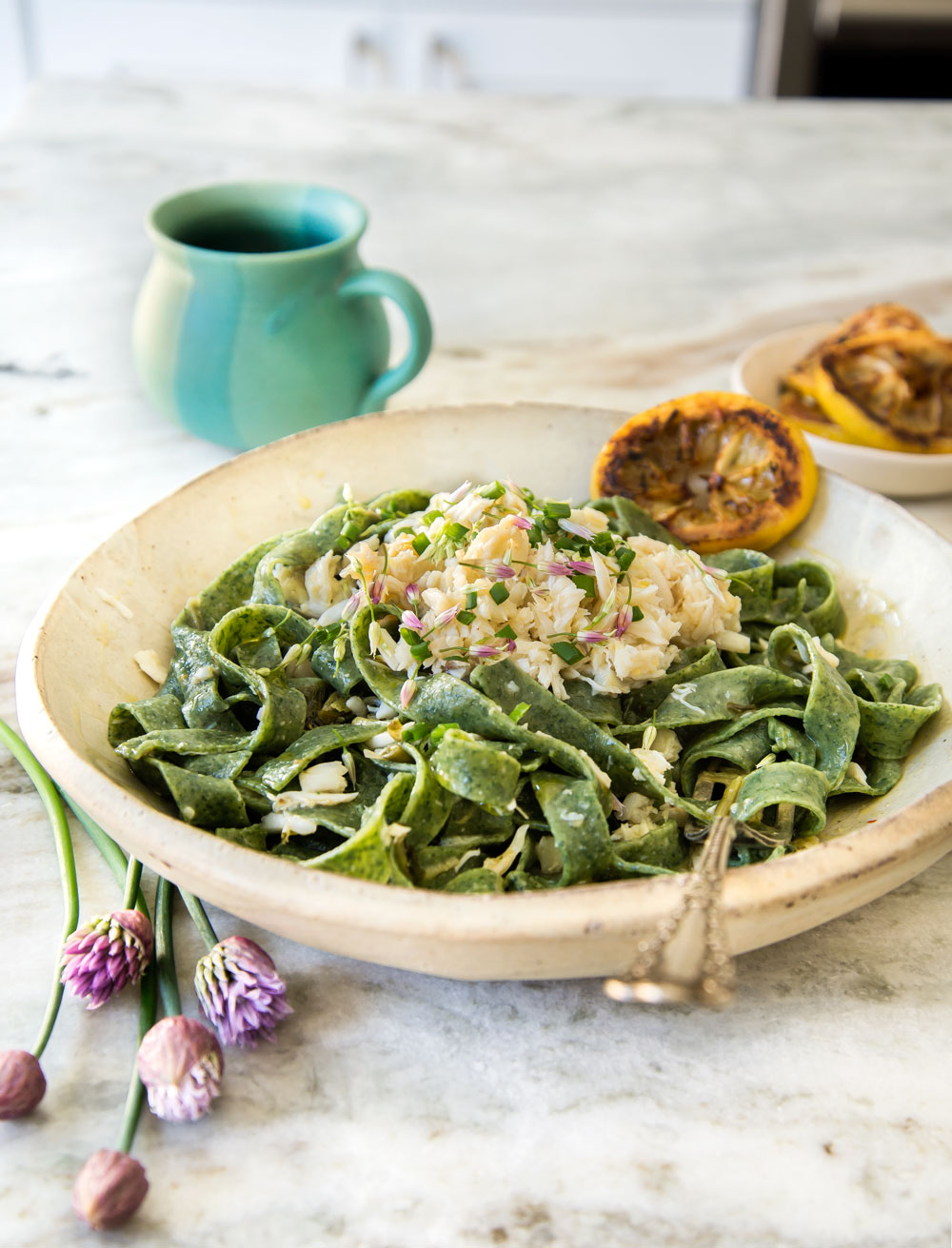















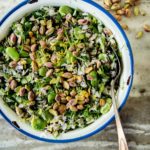
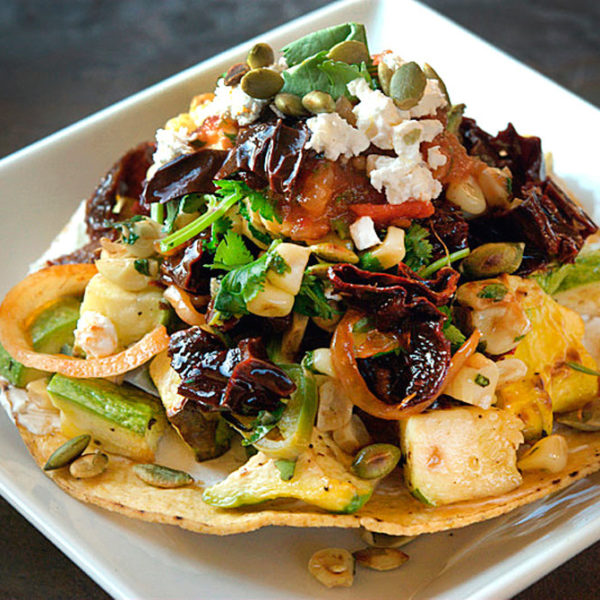
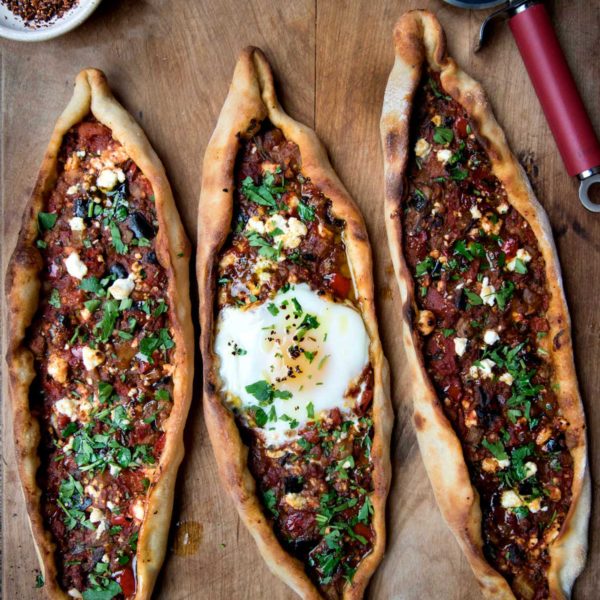
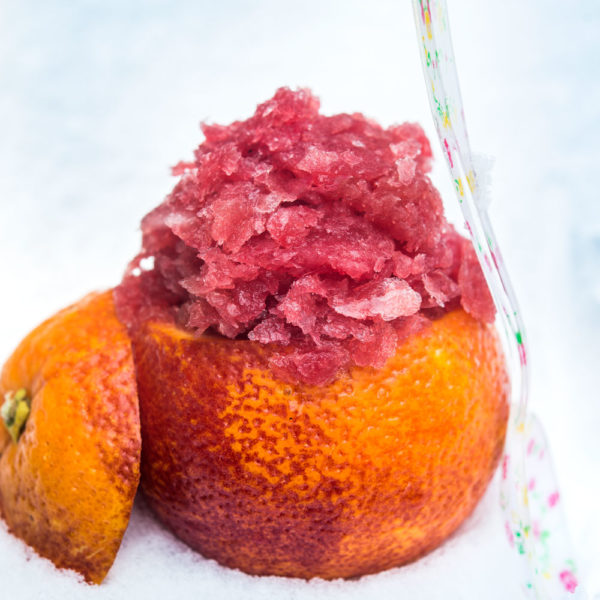


3 comments
Sabrina Russo
Beautiful dish!!